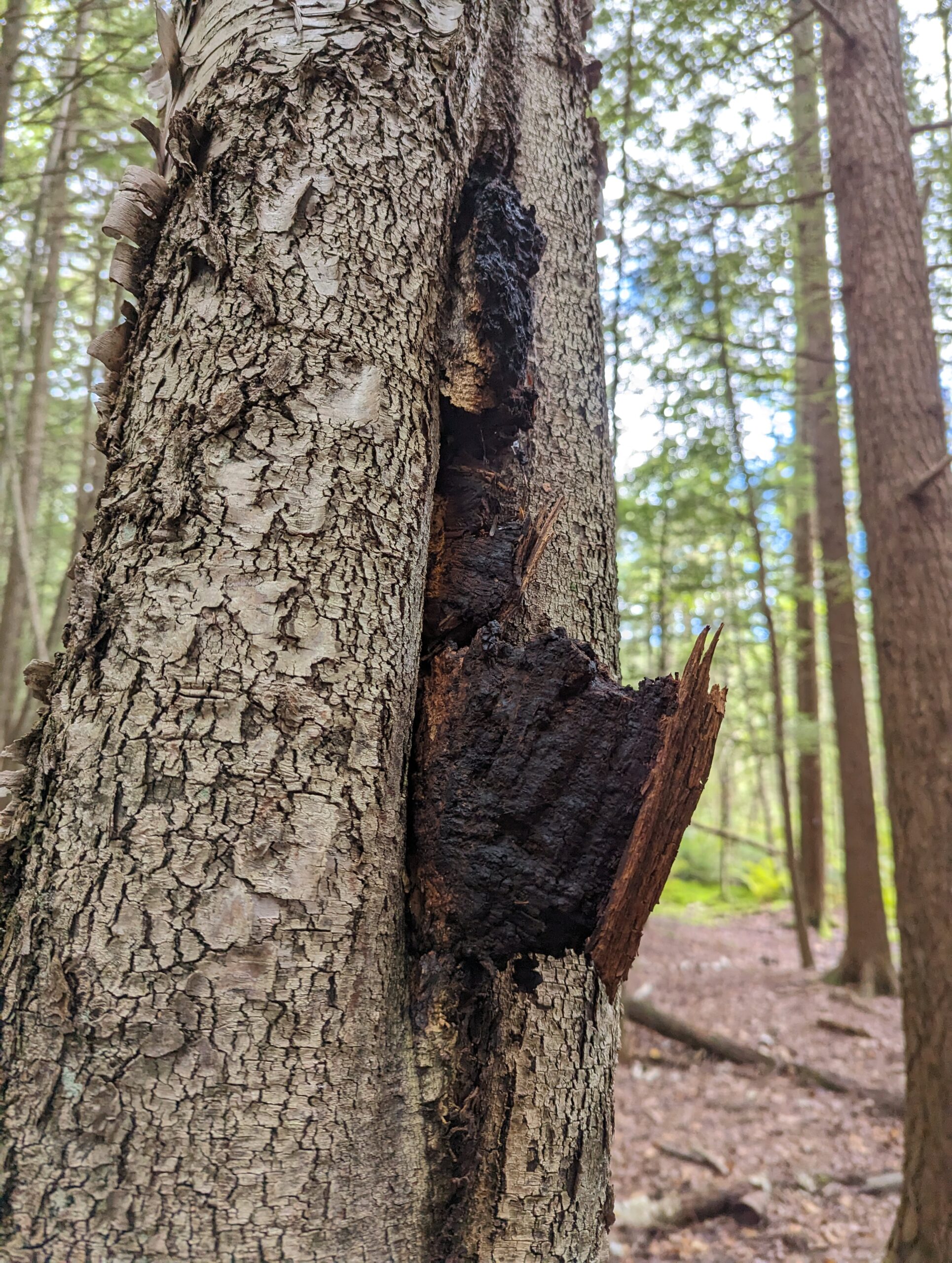You may have heard about Chaga: a seemingly mythical mushroom that health experts rave about constantly. Join Think Fungi as we explore Chaga, and its use throughout history and modern times.
What is Chaga?
The Chaga fungus (Inonotus obliquus) has emerged as a fascinating subject of interest in the world of health and wellness. It covers a vast area, nearly the entire temperate and colder regions of the Northern Hemisphere. Despite its odd appearance as a black and gold, charcoal-like growth on birch trees, Chaga has been cherished for centuries in traditional medicine and is now gaining popularity as a functional food and dietary supplement.
The fungus causes a condition called “heart rot”, in which the core of the host tree slowly gets consumed over a period of 10 to over 80 years. This ultimately leads to the weakening of the tree’s structure until it’s inevitable collapse. The then decaying tree becomes an optimal environment for fungus and other decomposers to recycle the tree’s nutrients.

Ancient Fungal Medicine
Chaga has been used as a medicinal mushroom for centuries by indigenous cultures throughout the northern hemisphere. The earliest record of this fungus being used by humans dates back to around 3300 BC, with the mummified remains of Otzi the Iceman. Otzi was discovered with a survival kit containing Chaga along with the fire-starting Hoof Mushroom. Another account comes from 2696 BC as the Father of Chinese Medicine, Shen Nung, hailed Chaga as a powerful medicinal mushroom.
However, it was only in the 1950s that the Moscow Medical Institute began conducting scientific research regarding I. obliquus. Researchers found potential for Chaga to assist in cancer treatment, but not enough data is currently available. One thing is certain though, Chaga contains an extremely high amount of anti-oxidants. Anti-oxidants have been proven to assist with essential body functions, strengthen the immune system, and reduce the risk of various cancers.

How is Chaga typically prepared:
Since Chaga is an extremely dense mushroom that’s quite literally as hard as wood, extracting the “good stuff” takes strength and patience. There are countless guides on how to prepare Chaga online, but we’ve narrowed it down to two. The most common method is to chop the dried fungus into chunks, then simmer them in water over a long period of time, at a relatively low heat. The second method of preparation is to grind the dried chunks into a powder and steep it in water much like one would prepare tea.
Always consult a healthcare professional before incorporating Chaga into a health regiment. This is especially true if you have existing health conditions or are taking medications.

The Commercialization of Chaga
Fortunately, Chaga is a mushroom that can be grown at home; but the process takes anywhere from 6-8 years to yield any results. For many, foraging is the most accessible option, but it is not necessarily the best. Many foragers, and corporations looking to capitalize on Chaga’s medicinal properties, may not have the same level diligence regarding over-harvesting. Many argue that there’s no harm in harvesting the whole chaga mass, as the tree is already dying. By harvesting the whole mass, you will create a large wound in the dying tree which will lead to a much faster demise. At Think Fungi, our stance is that we ought to minimized our human impact on nature. By leaving behind just 20%, the part that lies against the actual tree, you will be minimizing much of your impact.
Considering diving a bit deeper into the wonderful world of fungi? How about learning about wild edible mushrooms like Chaga that you can forage? Our Top 10 Edible Mushrooms course dives into how to easily identify the best wild mushrooms, and how to cook with them! Register today!
